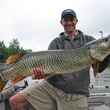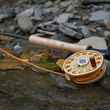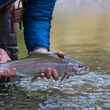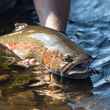When you report on fish population conservation and management issues, you're most often reporting bad news. While this isn't a pleasant consequence of the tasks, it is the reality. Every so often, a success stories like the current situation in Florida come along, and offer a the opportunity to report from a different perspective. Due to successful management practices, this week the Florida Fish and Wildlife Commission voted in new regulations on both redfish and speckled sea trout.

According to managers, both populations have reached levels of abundance that allow for increase take limits on these species. In some areas of Florida, stocks of these fish have almost doubled benchmarks set forth by the Florida Fish and Wildlife Commission (FWC) for use in determining the health of populations. In the case of sea trout, all regions of the state demonstrated in the 2010 assessment that populations exceeded benchmarks set forth by the FWC. Redfish populations have demonstrated a similar level of success, with benchmarks set forth by the FWC having been met or exceeded for the last couple of decades.






























